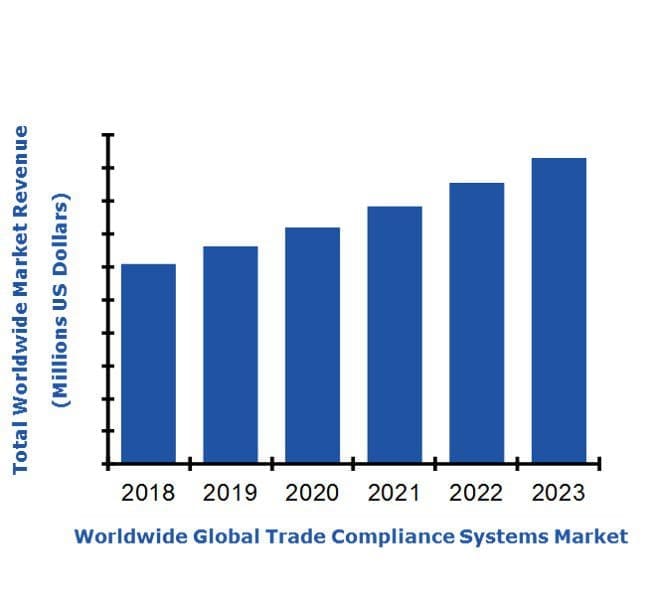 It’s not every day that global trade compliance is a primary concern for supply chain executives. But today is not just any day. ARC Advisory Group (and many others in the logistics prognostication game) believe that tariffs and free trade may be the number one supply chain topic in 2019. That’s not difficult to imagine given the recurring front-page news in 2018.
It’s not every day that global trade compliance is a primary concern for supply chain executives. But today is not just any day. ARC Advisory Group (and many others in the logistics prognostication game) believe that tariffs and free trade may be the number one supply chain topic in 2019. That’s not difficult to imagine given the recurring front-page news in 2018.
On Monday, I officially completed and published ARC Advisory Group’s Global Trade Compliance Systems (GTC) market research study. This research shows that the breadth of tariff changes, in conjunction with the level of press coverage, have increased corporate awareness of the impact that recent and potential tariff changes can have on their business operations. As a result, companies are taking the necessary steps to comply with trade regulations and to minimize their duty exposure. Global trade compliance system sales are increasing as a result. Simply put, trade regulations are now an elusive moving target. An investment in time and technology is now a corporate priority to comply with regulations and maintain operating margins.
Global Trade Compliance Functionality in Demand
GTC providers stated that functionality designed to support free trade agreement (FTA) adherence is increasingly in high demand as companies look at potential cost benefits from obtaining supply and production from locations within given free trade areas. MIC Customs, Thomson Reuters, and Amber Road note that free trade agreements are top of mind for multinational companies, as they utilize GTC functionality that enables item classification for customs, rules of origin determination for preferential treatment, and a comprehensive set of trade data that enables valuable scenario planning for an increasingly uncertain cross-border trade environment.
Also in heightened demand is functionality that assists with the management of special duty programs such as foreign trade zones (FTZ). FTZ and other government designated import/export processing programs allow companies to import intermediate goods, apply additional manufacturing or other value-added steps, and then export without duty exposure. These programs and the software functionality that supports the process are becoming more popular as companies look to minimize the cost impact of tariffs on their operations. MIC Customs Solutions and Thomson Reuters specifically noted increased interest in their FTZ functionality. And SAP, in a recent release of SAP GTS, included US FTZ functionality that is of high interest to the company’s clients.
Mergers and Acquisitions Continue
Mergers and acquisitions within the GTC market continued in 2018, as a number of companies took steps to expand the geographical reach of their customs filing software capabilities, while others expanded their overall market presence. Most notably, Thomson Reuters acquired Integration Point in 2018. Integration Point will become part of the Corporates customer segment of Thomson Reuters, complementing the ONESOURCE global trade offering that grew out of the 2013 Softway acquisition. Also, in the fall of 2018, ESW Capital acquired TradeBeam as part of its acquisition of the Vertical Business Applications Group of Aptean, and created the Avolin portfolio of companies. Finally, WiseTech Global and BluJay Solutions both expanded their geographical reach through the acquisition of smaller, regional customs and compliance software providers, as Descartes did in prior years. In fact, Descartes, BluJay, and WiseTech are the primary GTC providers to customs brokers and other logistics service providers that continue to represent importers in their customs declarations.
Final Word
Global trade compliance system (GTC) sales are driven by multiple factors including trade volumes, over-all tariff exposure, operational costs, potential savings, compliance requirements, risk mitigation, IT investment spending, and more. The IMF downgraded its global growth forecast this past weekend. However, it noted as a primary factor “An escalation of trade tensions beyond those already incorporated in the forecast remains a key source of risk to the outlook.” This further reinforces that trade relations are top of mind not just for corporations, but also for economies across the globe. It appears that this is the day of trade compliance.
Click link to access ARC’s Global Trade Compliance market research study description.


















Leave a Reply